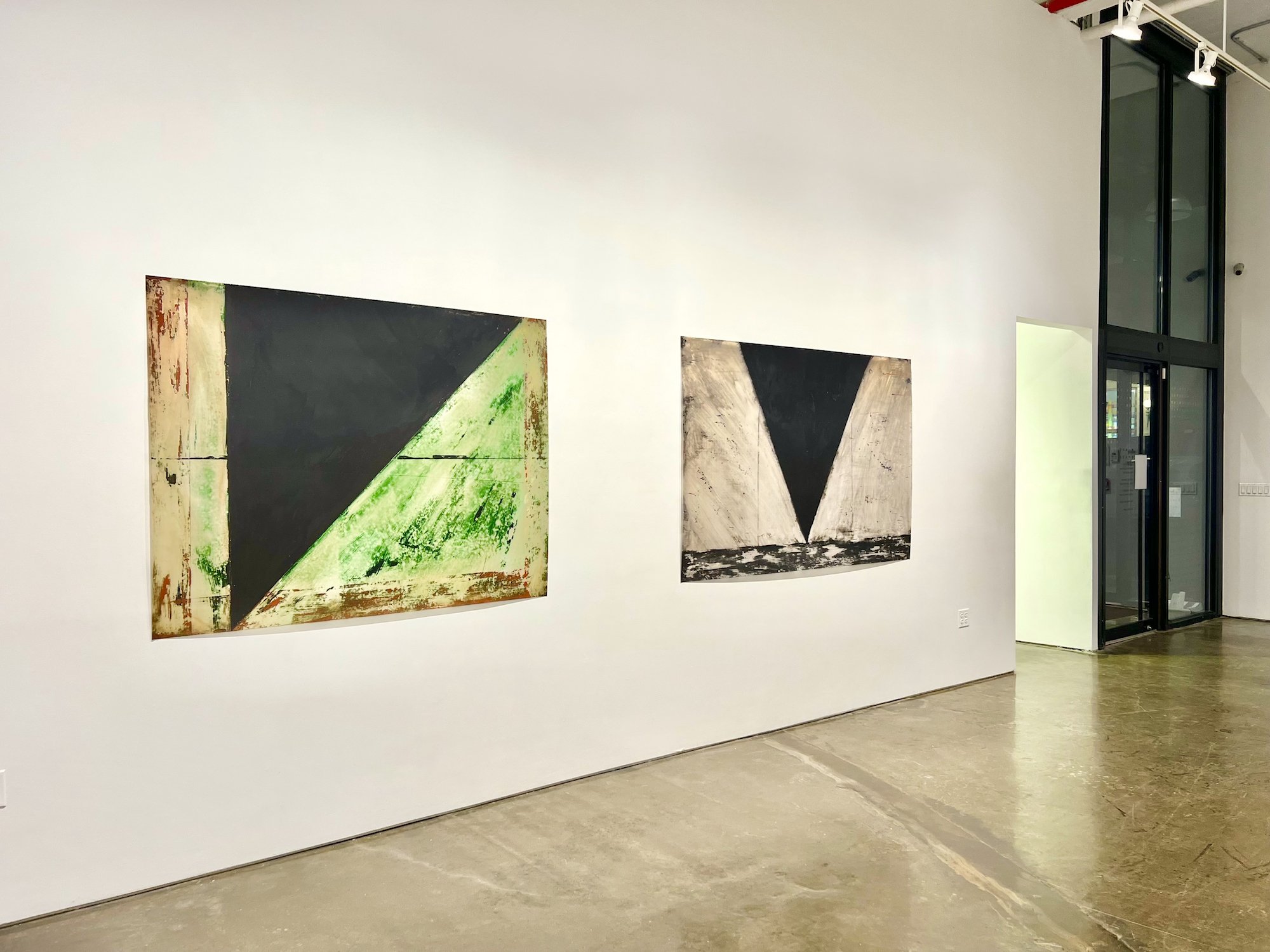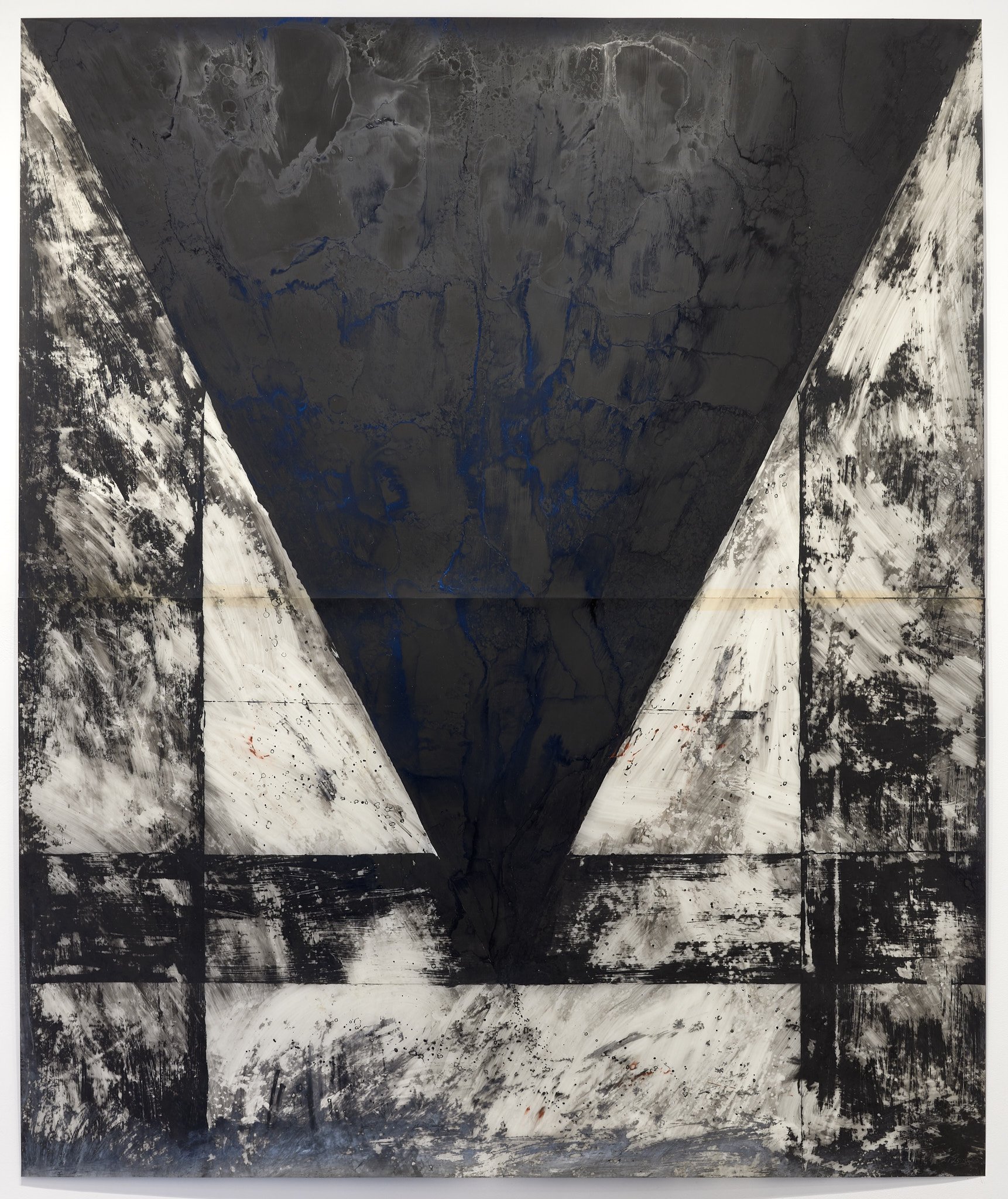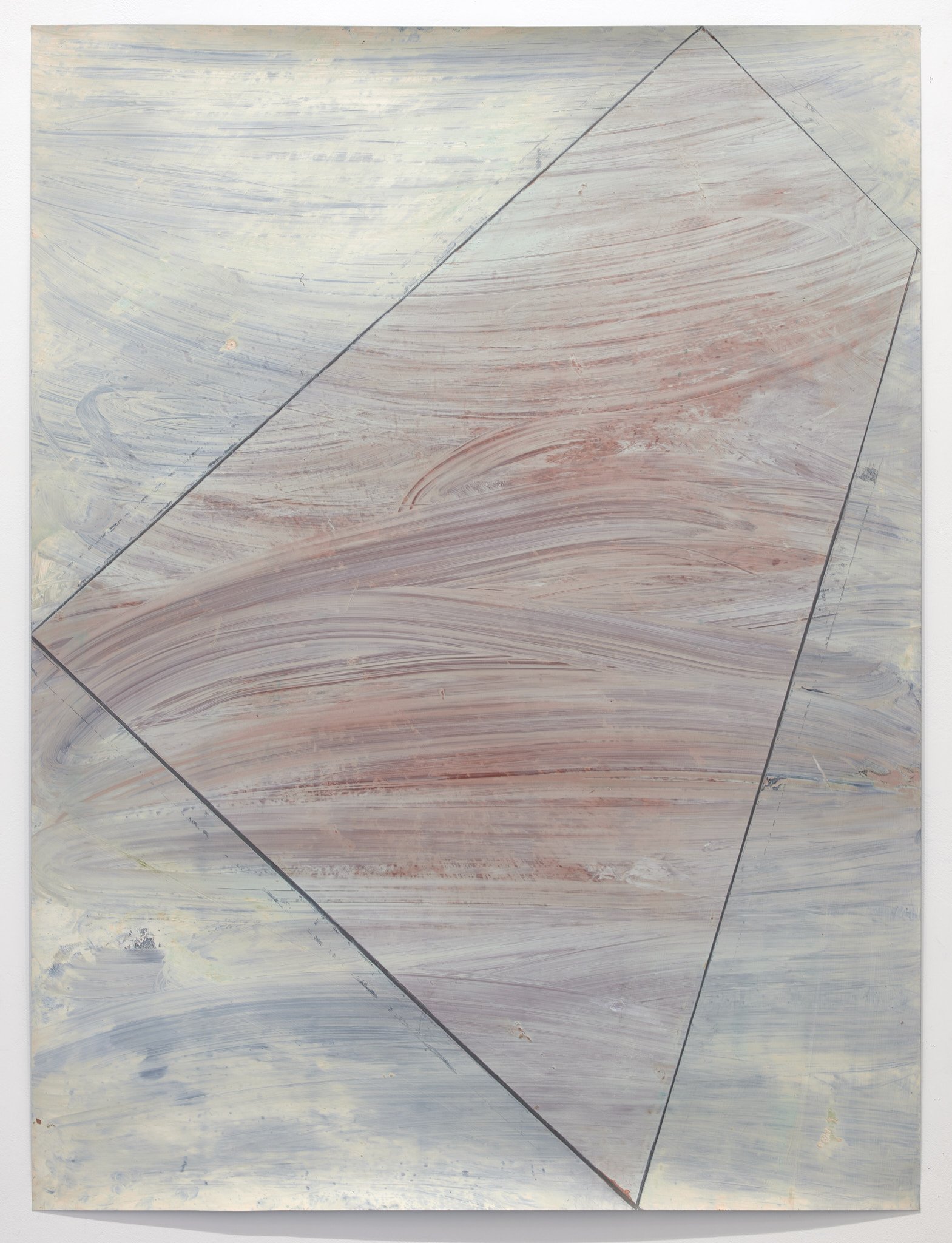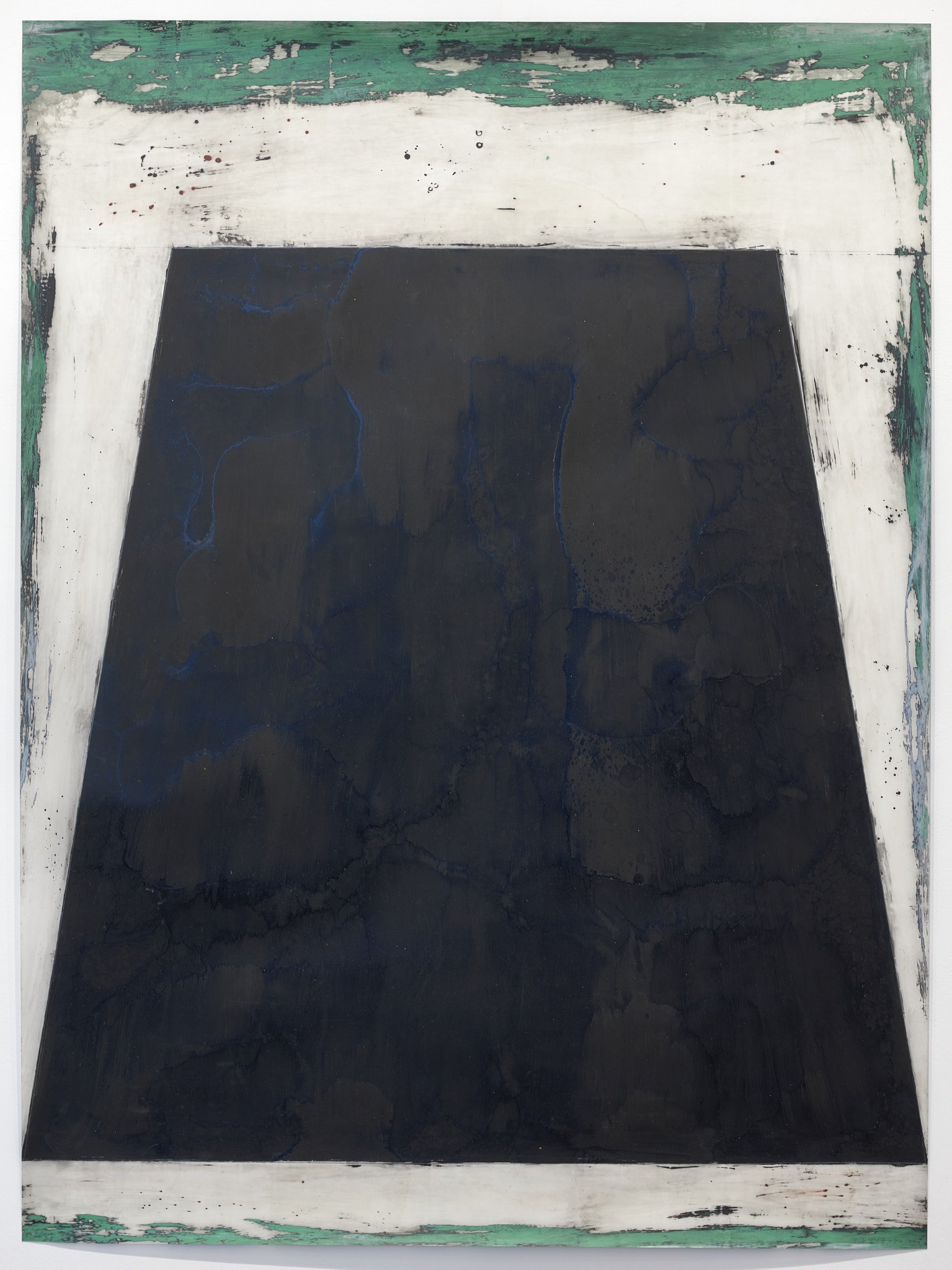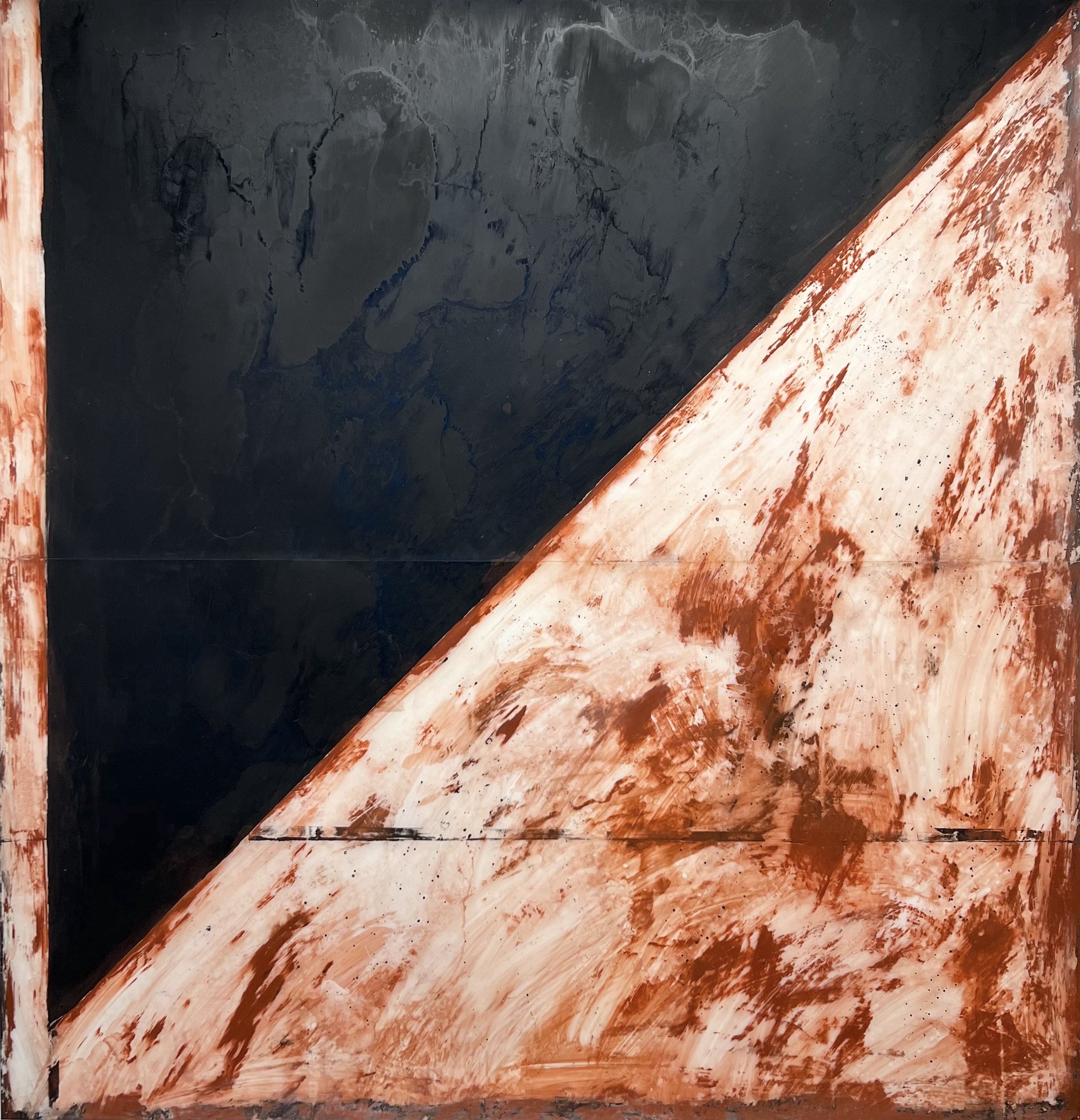
Cris Gianakos
Works on Mylar 1983-1989
January 7 – March 25, 2023
Part 1: January 7 - February 11
Part 2: February 18 - March 25
Opening Receptions:
Saturday, January 7, 4-6pm
Saturday, February 18, 4-6pm
Online Artist Talk: Thursday, January 26, 7-8pm EST
Exhibition Tour with the Artist: Saturday, February 25, 3pm
Press Release (PDF)
Exhibition Checklist - Part 1 (PDF)
Exhibition Checklist - Part 2 (PDF)
Available Artworks (PDF)
Press
Cris Gianakos: Works on Mylar 1983-1989, by Robert C. Morgan, The Brooklyn Rail, March 2023
Exhibition Videos
Video Tour of Exhibition (Part 1)
Video Tour of Exhibition (Part 2)
Cris Gianakos Artist Talk
Thursday, January 26, 7-8pm EST
In the Studio with Cris Gianakos
by Christian Nguyen, American Abstract Artists, February 2022
MINUS SPACE is honored to present Cris Gianakos: Works on Mylar 1983-1989, a two-part solo exhibition featuring mid- and large-format artworks by the esteemed NYC-based artist. This is Gianakos’s second solo exhibition at the gallery.
Cris Gianakos has created innovative sculpture, installation, painting, drawing, printmaking, photography, and performance since the mid-1960s. He is historically aligned with a diverse group of New York artists who, in the late 1960s and 70s, abandoned the industrial aesthetics and static forms of Minimalism. Later referred to as Post-Minimalists, Gianakos and his peers embraced process, structure, materiality, site-specificity, scale, and temporality as artistic mediums.
Best known for his iconic ramp sculptures, Gianakos has been engaged in non-objective painting and drawing since the mid-1970s, employing nontraditional materials and techniques in direct dialogue with his three-dimensional work. In the early 1980s, Gianakos embarked on a new body of mixed media works on large sheets of Mylar, a semi-translucent polyester film originally developed for industrial purposes several decades earlier. Gianakos felt the durable yet translucent material — which he had used in smaller scale in his prior graphic design practice as well as in the schematics for his public sculpture — possessed a certain cinematic quality that was reminiscent of film noir, his own photographic practice, and the unique light in his ancestral Greece.
Working flat on the floor, Gianakos experimented with various types of Mylar, each possessing a slightly different surface coating, to which he applied an array of materials including acrylic, ink, graphite, water, and solvent in both an additive and subtractive manner. As the artist recalls, the various Mylars were “very sympathetic to the touch and would respond to me in different ways, the effects of which were quite subtle but important.”
The resulting works vary widely in scale and each feature a single, richly-black geometric shape – such as the inverted triangle of his Delta series or the tapered rectangle of his Mastaba series – presented against a more gestural, fluid ground achieved through erasure and tinted with muted hues of red, brown, green, blue, and silver. Graphic elements within the spatially-activated fields appear to be in a state of transformation, evocative of architectural masses, topographic formations, and emblematic signs imbued with implied movement.
Describing the shifting pictorial metaphors in the Mylar works, poet and writer John Yao, in a 2005 text on the artist, writes: “In some works the monumental forms can be read either as massive presences or as doorways opening onto a receding space. In others, a light absorbing geometric shape sits in or enters an atmospheric field.”
First exhibited at Gallery Nordenhake in Malmö, Sweden (1984), works from the series were subsequently shown in the artist’s solo exhibition RAMPWORKS at the University of Massachusetts at Amherst (1989). In his catalogue essay accompanying the latter exhibition, artist and writer Stephen Westfall draws parallels between Gianakos’s two- and three-dimensional works, suggesting that the geometric forms in the works on Mylar refer to the sculptural planes of the ramp works viewed either frontally or in perspective. Together with the inherent translucency of the Mylar, the intensive surface produced by the acrylic, ink, and solvent generates a resonant light that echoes the visual and spatial experience of Gianakos’s sculpture in situ.
Part I of the exhibition at the gallery will run from January 7 – February 11. Part 2 will be on view from February 18 – March 25.
The artist will give a free, online public talk via Zoom on Thursday, January 26, from 7-8pm EST. Register here.
The artist will also lead an in-person exhibition walk-through on Saturday, February 25, at 3pm. Masks are required for the health of all guests.
ABOUT THE ARTIST
Cris Gianakos (b. 1934 in New York, NY; lives in New York, NY, and Chania, Crete, Greece) has exhibited his work in solo and group exhibitions worldwide, including in the United States, Europe, Japan, Argentina, Canada, and Senegal. His recent museum exhibitions include the Municipal Art Gallery (Chania, Crete, Greece), Museum für Kunst und Gewerbe (Hamburg), Museum of Contemporary Art of Crete, (Rethymnon, Greece), MOMus Museum of Contemporary Art (Thessaloniki), MOMus Museum of Modern Art-Costakis Collection (Thessaloniki), MOMus Museum Alex Mylona (Athens), Baltimore Museum of Art (Baltimore), Museum of Modern Art (New York), and Het Museum Voor Schoene Kunsten (Ghent).
His work has been reviewed in publications, such as Artforum, ARTnews, Art in America, Chicago Tribune, The New York Times, Newsweek, Philadelphia Inquirer, and the Village Voice. He has received numerous awards and grants, including from the National Endowment for the Arts, Pollock-Krasner Foundation, Adolph & Esther Gottlieb Foundation, and New York State Council on the Arts. He is also a member of the prestigious group American Abstract Artists.
Gianakos’s work is represented in dozens of public collections worldwide, including the Museum of Modern Art, Brooklyn Museum, Smithsonian Institution, Fogg Art Museum/Harvard University, Jane Voorhees Zimmerli Art Museum, Milwaukee Art Museum, Hammer Museum, San Diego Museum of Art, MOMus Museum of Contemporary Art-Macedonian (Thessaloniki), Malmo Museum (Malmo), Moderna Museet (Stockholm), National Museum (Stockholm), MOMus Museum of Modern Art-Costakis Collection (Thessaloniki), Baltimore Museum of Art (Baltimore), Museum of Modern Art (New York), and Watkita Museum of Art (Tokyo), among many others.
ABOUT MINUS SPACE
Founded in 2003, MINUS SPACE presents the past, present, and future of reductive art on the international level. We launched our redesigned and reconceived website a year ago to make learning about and collecting new art accessible, enriching, and rewarding.
Visit our Artists page for available artworks by an incomparable array of groundbreaking national and international artists.
Shop our Editions page for compelling limited edition prints and multiples by gallery and affiliated artists dating from the 1960s to today.
Shop our Books page for dozens of new and out-of-print publications about gallery artists and reductive art, including monographs, exhibition catalogues, writings, and ephemera.
#crisgianakos
#worksonmylar1983-1989
Exhibition Views
(Part 1)
Exhibition view of Cris Gianakos: Works on Mylar 1983-1989 (Part 1), January 7 - February 11, 2023
Exhibition view of Cris Gianakos: Works on Mylar 1983-1989 (Part 1), January 7 - February 11, 2023
Exhibition view of Cris Gianakos: Works on Mylar 1983-1989 (Part 1), January 7 - February 11, 2023
Exhibition view of Cris Gianakos: Works on Mylar 1983-1989 (Part 1), January 7 - February 11, 2023
Exhibition view of Cris Gianakos: Works on Mylar 1983-1989 (Part 1), January 7 - February 11, 2023
Exhibition view of Cris Gianakos: Works on Mylar 1983-1989 (Part 1), January 7 - February 11, 2023
Exhibition view of Cris Gianakos: Works on Mylar 1983-1989 (Part 1), January 7 - February 11, 2023
Exhibition view of Cris Gianakos: Works on Mylar 1983-1989 (Part 1), January 7 - February 11, 2023
Exhibition view of Cris Gianakos: Works on Mylar 1983-1989 (Part 1), January 7 - February 11, 2023
Exhibition view of Cris Gianakos: Works on Mylar 1983-1989 (Part 1), January 7 - February 11, 2023
Exhibition view of Cris Gianakos: Works on Mylar 1983-1989 (Part 1), January 7 - February 11, 2023
Exhibition view of Cris Gianakos: Works on Mylar 1983-1989 (Part 1), January 7 - February 11, 2023
Exhibition view of Cris Gianakos: Works on Mylar 1983-1989 (Part 1), January 7 - February 11, 2023
Exhibition view of Cris Gianakos: Works on Mylar 1983-1989 (Part 1), January 7 - February 11, 2023
Works on Mylar
Delta, Pegasus + Atlantis Series
Cris Gianakos, Pegasus Series, Uranus II, 9.30.85, 1985, Acrylic, ink, and graphite on Mylar, 96 x 93 inches / 244 x 236 cm, #CG71 - Reserved for museum collections only
Cris Gianakos, Delta Series VIII, 2.25.85, 1985, Acrylic, ink, and graphite on Mylar, 108 x 90 inches / 274 x 229 cm, #CG75 - Reserved for museum collections only
Cris Gianakos, Delta Series, 2.25.85, 1985, Acrylic, ink, and graphite on Mylar, 108 x 90 inches / 274 x 229 cm, #CG84
Cris Gianakos, Atlantis Series X, 2.26.89, 1989, Acrylic, ink, and graphite on Mylar, 80.5 x 60 inches / 205 x 153 cm, #CG85
Cris Gianakos, Atlantis Series, 5.25.87, 1987, Acrylic, ink, and graphite on Mylar, 69 x 54 inches / 175 x 137 cm, #CG80
Cris Gianakos, Delta Series (Red), 1.6.85 / 11.12.87, 1985-1987, Acrylic, ink, and graphite on Mylar, 72 x 54 inches / 183 x 137 cm, #CG86
Cris Gianakos, Delta Series, 1984-1987, Acrylic, ink, and graphite on Mylar, 54 x 83 inches / 137 x 211 cm, #CG79
Cris Gianakos, Pegasus Series, 8.28.83, 1983, Acrylic, ink, and graphite on Mylar, 48 x 62 inches / 122 x 158 cm, #CG76 - Not For Sale
Cris Gianakos, Steel Ramp Plate II, 6.26.87 / 1.2.91, 1987-1991, Acrylic, ink, and graphite on Mylar, 72 x 54 inches / 183 x 137 cm, #CG87
Cris Gianakos, Untitled, 5.23.83 / 5.25.83, 1983, Acrylic, ink, and graphite on Mylar, 72 x 54 inches / 183 x 137 cm, #CG88
Cris Gianakos, Pegasus Series, 5.14.83, For Rhoda Urman, 1983, Acrylic, ink, and graphite on Mylar, 56 x 54 inches / 143 x 137 cm, #CG89
Cris Gianakos, Delta Series XXXXIII, 4.16.89, 1989, Acrylic, ink, and graphite on Mylar, 55 x 40 inches / 140 x 102 cm, #CG90
Cris Gianakos, Pegasus Series, 3.1.85, 1985, Acrylic, ink, and graphite on Mylar, 54 x 34.5 inches / 137 x 88 cm, #CG74
Cris Gianakos, Leningrad Series #II, 11.16.85, 1985, Acrylic, ink, and graphite on Mylar, 51 x 38 inches / 130 x 97 cm, #CG81
Cris Gianakos, Pegasus Series, 8.12.83, 1983, Acrylic, ink, and graphite on Mylar, 36 x 24 inches / 91 x 61 cm, #CG72 - Not For Sale
Cris Gianakos, Pegasus Series X, 8.16.83, 1983, Acrylic, ink, and graphite on Mylar, 36 x 24 inches / 91 x 61 cm, #CG73 - Not For Sale
Cris Gianakos, Delta Series, 4.4.85, 1985, Acrylic, ink, and graphite on Mylar, 36 x 24 inches / 91 x 61 cm, #CG82 - Reserved for museum collections only
Cris Gianakos, Delta Series XXXI, 4.21.86, 1986, Acrylic, ink, and graphite on Mylar, 36 x 24 inches / 91 x 61 cm, #CG91
Cris Gianakos, Pegasus XIV, 9.3.83, 1983, Acrylic, ink, and graphite on Mylar, 36 x 24 inches / 91 x 61 cm, #CG92
Cris Gianakos, Pegasus Series, 8.10.83, 1983, Acrylic, ink, and graphite on Mylar, 24 x 36 inches / 61 x 91 cm, #CG93
Cris Gianakos, Pegasus Series XV, 8.24.83, 1983, Acrylic, ink, and graphite on Mylar, 24 x 36 inches / 61 x 91 cm, #CG83
Cris Gianakos, Diver Series, 5.5.83, 1983, Acrylic, ink, and graphite on Mylar, 24 x 36 inches / 61 x 91 cm, #CG94
Cris Gianakos, Atlantis Series, 11.14.86, 1986, Acrylic, ink, and graphite on Mylar, 14 x 11.875 inches / 35.6 x 30.2 cm, #CG95
Cris Gianakos, Diver Structure, 5.30.83, 1983, Acrylic, ink, and graphite on Mylar, 11 x 8.5 inches / 28 x 21.6 cm, #CG96
Cris Gianakos, Double Ramp, 8.22.87, 1987, Acrylic, ink, and graphite on Mylar, 11 x 8.5 inches / 28 x 21.6 cm, #CG97
Cris Gianakos, Ramp Structure, 10.7.82, 1982, Acrylic, ink, and graphite on Mylar, 8 x 12.75 inches / 20.3 x 32.4 cm, #CG98
Cris Gianakos, Untitled, 1.18.84, 1984, Acrylic, ink, and graphite on Mylar, 11 x 7.875 inches / 28 x 20 cm, #CG99
Cris Gianakos, Untitled, 1983, Acrylic, ink, and graphite on Mylar, 11 x 7.875 inches / 28 x 20 cm, #CG102
Cris Gianakos, Untitled, 11.30.84, 1984, Acrylic, ink, and graphite on Mylar, 7.5 x 8 inches / 19 x 20.3 cm, #CG100
Exhibition Views
(Part 2)
Exhibition view of Cris Gianakos: Works on Mylar 1983-1989 (Part 2), February 18 - March 25, 2023
Exhibition view of Cris Gianakos: Works on Mylar 1983-1989 (Part 2), February 18 - March 25, 2023
Exhibition view of Cris Gianakos: Works on Mylar 1983-1989 (Part 2), February 18 - March 25, 2023
Exhibition view of Cris Gianakos: Works on Mylar 1983-1989 (Part 2), February 18 - March 25, 2023
Exhibition view of Cris Gianakos: Works on Mylar 1983-1989 (Part 2), February 18 - March 25, 2023
Exhibition view of Cris Gianakos: Works on Mylar 1983-1989 (Part 2), February 18 - March 25, 2023
Exhibition view of Cris Gianakos: Works on Mylar 1983-1989 (Part 2), February 18 - March 25, 2023
Works on Mylar
Stele + Mastaba Series
Cris Gianakos, Stele Series LXIV, 2.22.88, 1988, Acrylic, ink, and graphite on Mylar, 120 x 120 inches / 305 x 305 cm, #CG105
Cris Gianakos, Stele Series LXVIII, 2.22.88, 1988, Acrylic, ink, and graphite on Mylar, 60 x 60 inches / 153 x 153 cm, #CG103
Cris Gianakos, Stele Series LXIII, 1.9.89, 1989, Acrylic, ink, and graphite on Mylar, 60 x 45 inches / 153 x 114 cm, #CG106
Cris Gianakos, Stele Series LXIV-A, 1.10.89, 1989, Acrylic, ink, and graphite on Mylar, 20 x 14.25 inches / 51 x 36.2 cm, #CG104
Cris Gianakos, Stele Series, 8.5.87, 1987, Acrylic, ink, and graphite on Mylar, 17.75 x 14 inches unframed, 20.75 x 17.25 inches framed / 45 x 35.5 cm unframed, 52.7 x 43.8 cm framed, #CG111
Cris Gianakos, Stele VII, 7.18.87, 1987, Acrylic, ink, and graphite on Mylar, 17.75 x 14 inches unframed, 20.75 x 17.25 inches framed / 45 x 35.5 cm unframed, 52.7 x 43.8 cm framed, #CG112
Cris Gianakos, Mastaba Series XVII, 5.29.87, 1987, Acrylic, ink, and graphite on Mylar, 88.5 x 60 inches / 225 x 153 cm, #CG108
Cris Gianakos, Mastaba Series XIV, 12.19.86, 1986, Acrylic, ink, and graphite on Mylar, 80.5 x 60 inches / 205 x 153 cm, #CG107
Cris Gianakos, Mastaba Series V, 6.13.86, 1986, Acrylic, ink, and graphite on Mylar, 36 x 24 inches / 91 x 61 cm, #CG110












